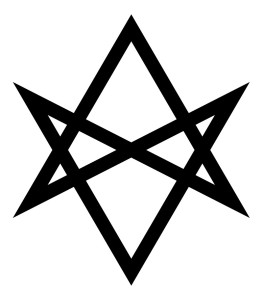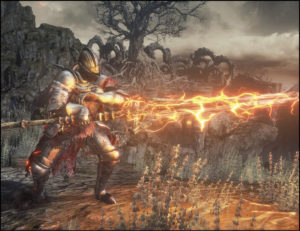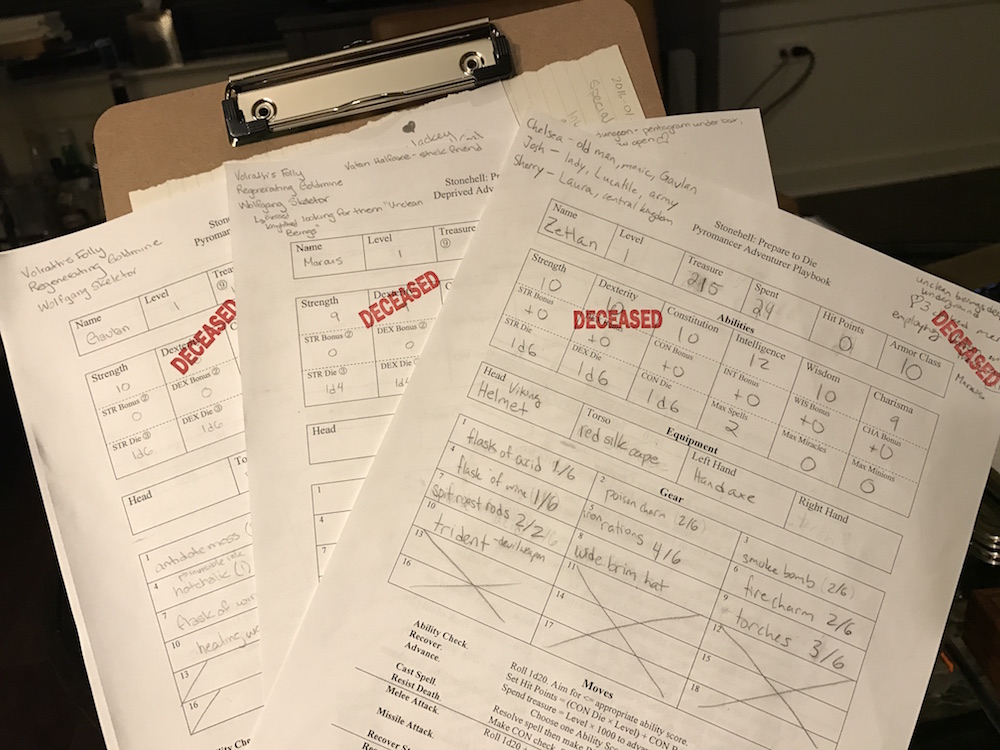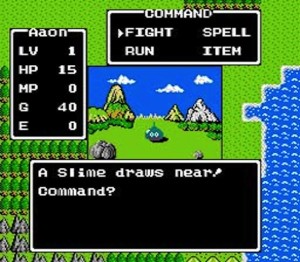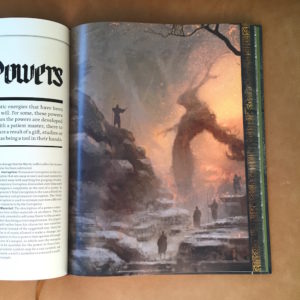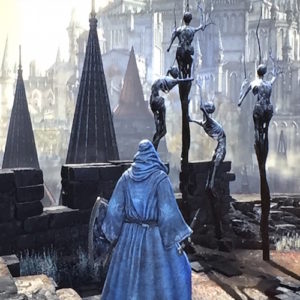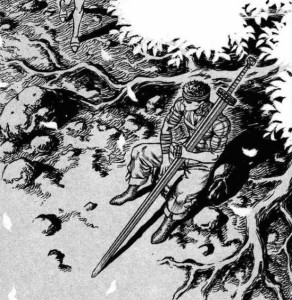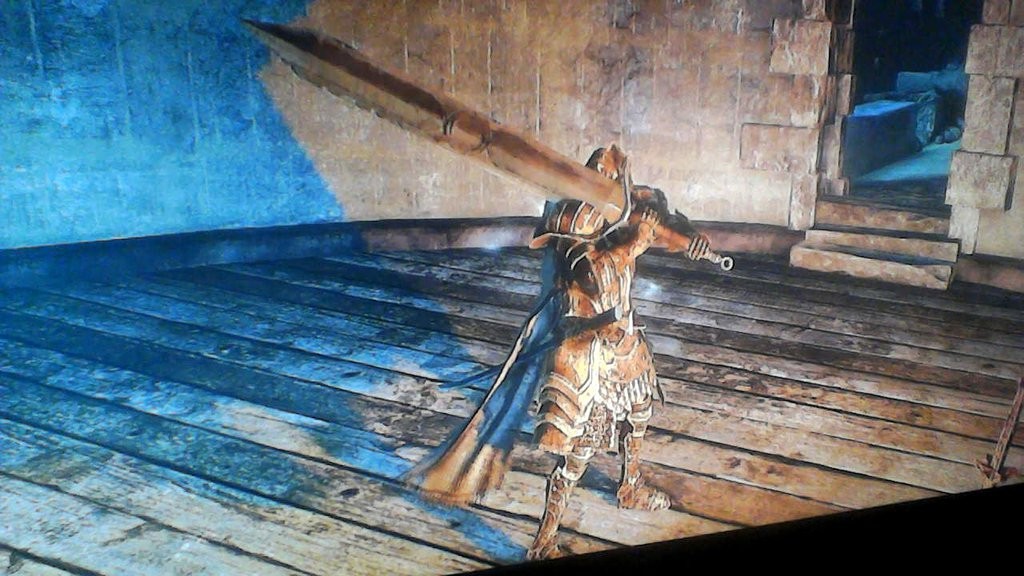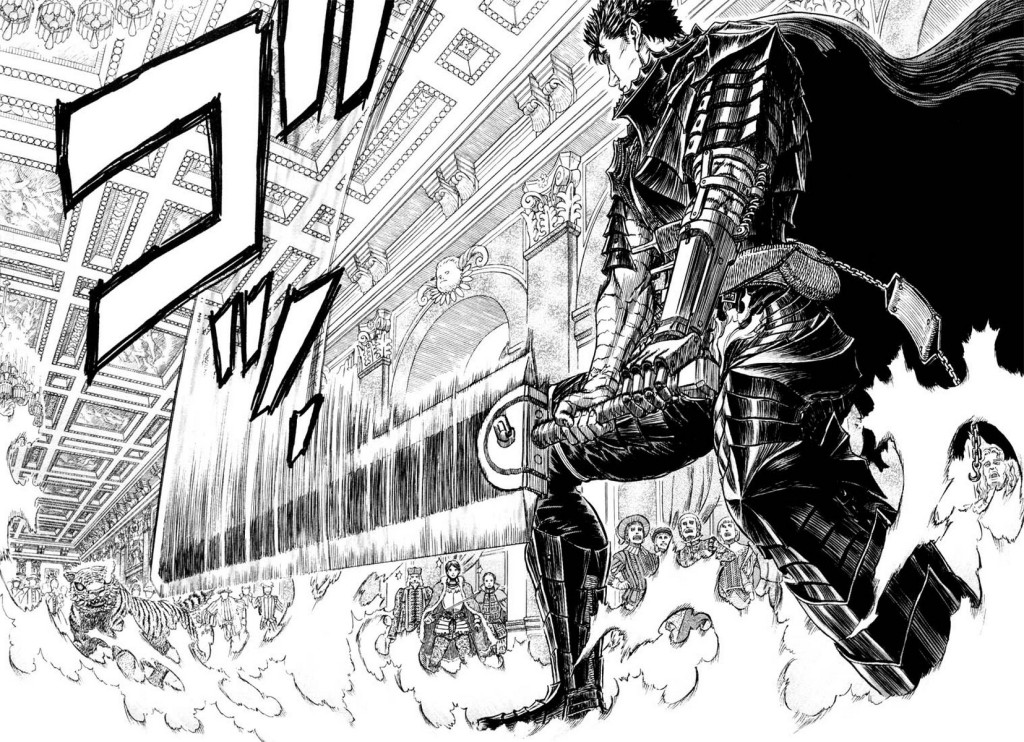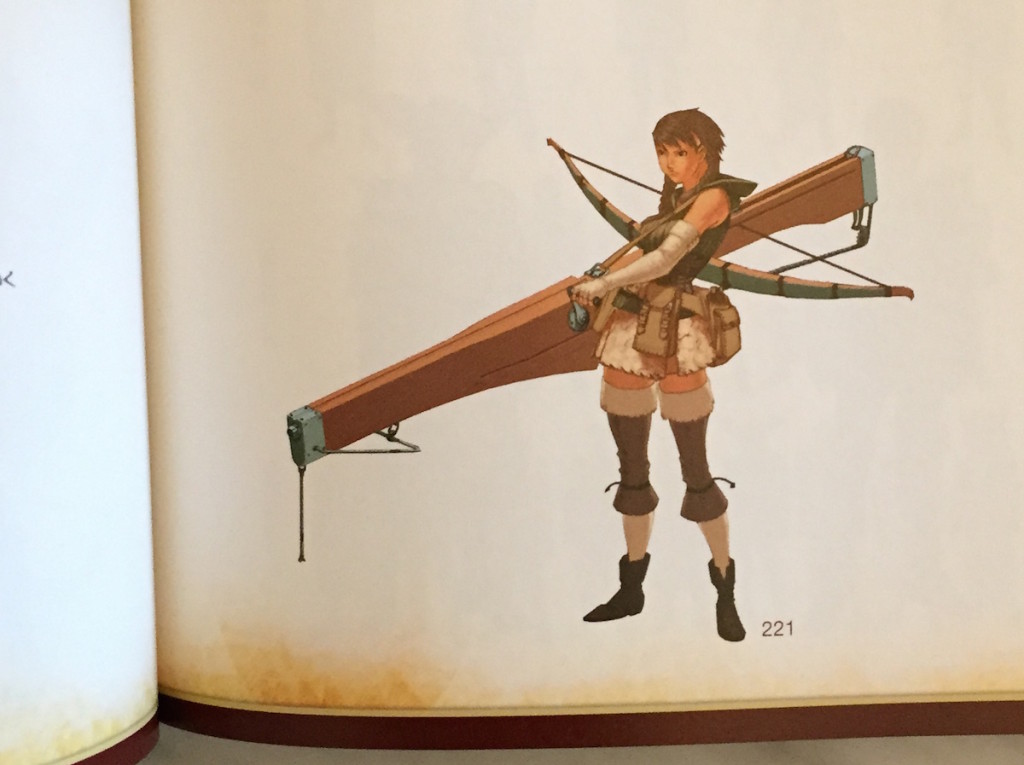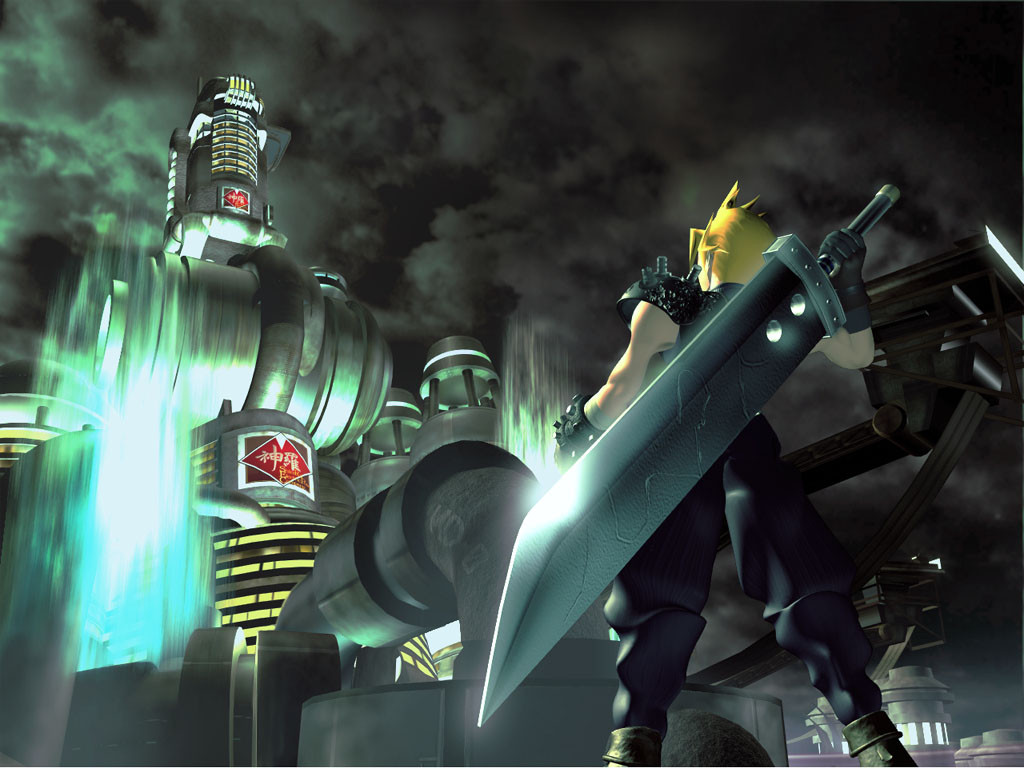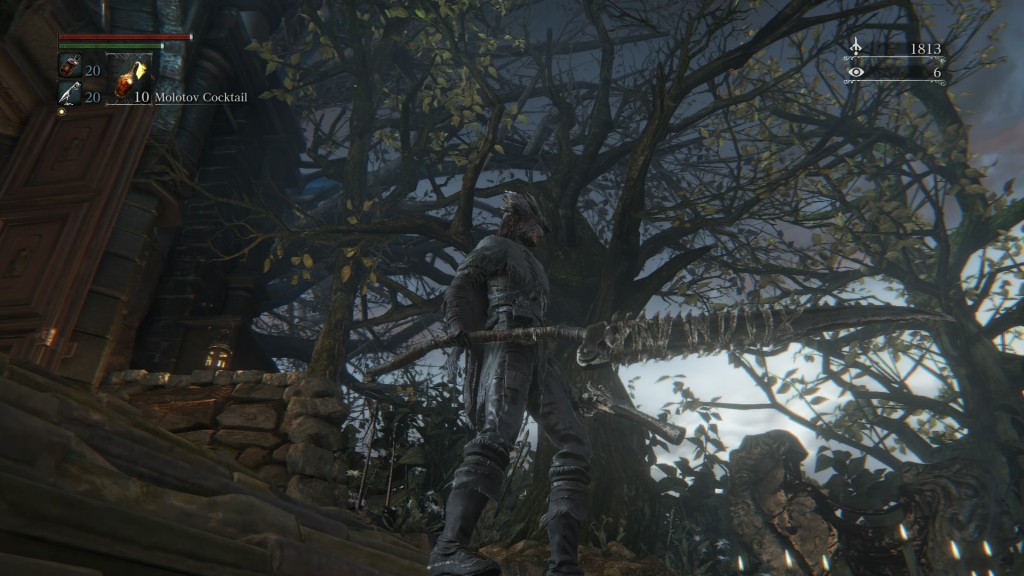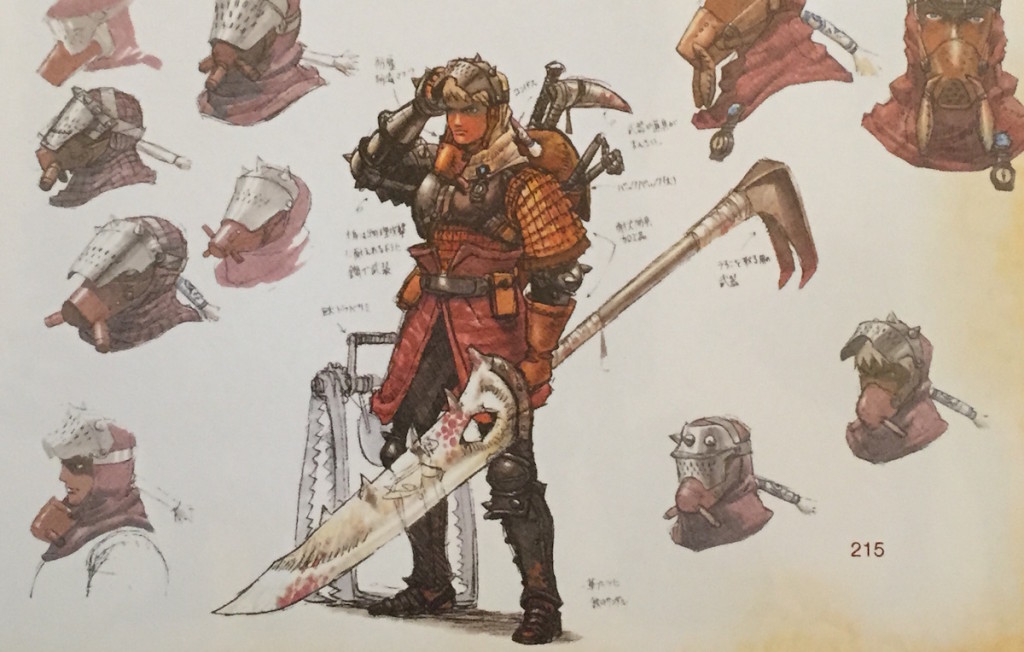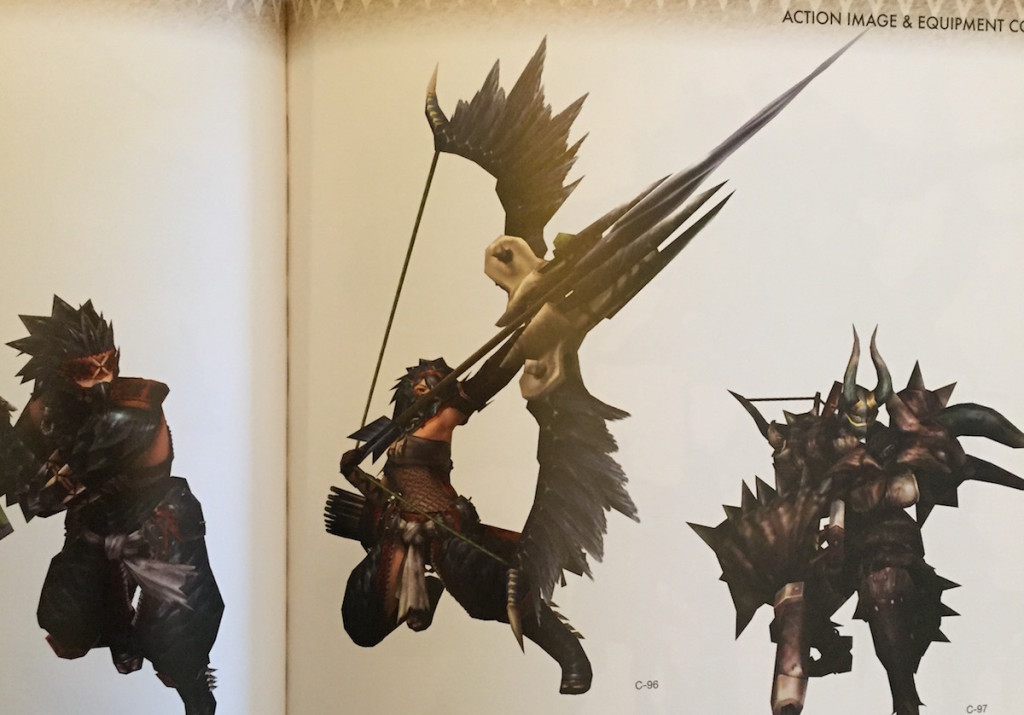This is a hack that integrates an alternative partial-success d20 resolution system and replacement health system. The original posts on some of these ideas:
- Halfway houses (five level d20 partial success resolution system)
- Catastrophe magic (using the resolution system to replace traditional Vancian magic)
- Mettle, trauma, and grit (replaces hit points)
The primary design priority is fluent ease of use.
For me, this is essentially subsystem playtesting (for my ongoing, slow-burning Hexagram project), but I think this could be useful as a mod also.
(See the downloads page for a PDF version.)
Necropraxis Mettle Rules Graft
Start with something like B/X D&D, Labyrinth Lord, or Lamentations of the Flame Princess and then suture in the following systems and rules. This is a draft playtest document and I assert no compatibility.
Tests
- Resolve uncertain actions using the test procedure (1d20 +modifier), interpreting the result as follows:
| 1 | 2-9 | 10-15 | 16-18 | 19+ |
|---|---|---|---|---|
| Hindrance & Catastrophe | Hindrance | Progress & Hindrance | Progress | Progress & Triumph |
- Tests replace attack rolls, ability checks, and saving throws
- If the unmodified result is 1 or 19+, ignore the modifier
Basics
-
- Moves are actions with predefined sets of potential test outcomes (see combat, below, for examples)
- Add proficiency bonus to class-relevant tests given proper equipment
- Weapons for fighters, lock picks for thieves, wands for magic-users, and so forth
- Proficiency bonus follows 5E: = ceiling(level / 4) + 1
| 1 | 2 | 3 | 4 | 5 | 6 | 7 | 8 | 9 | 10 | 11 | 12 | 13 | 14 | 15 | 16 | 17 | 18 | 19 | 20 |
|---|---|---|---|---|---|---|---|---|---|---|---|---|---|---|---|---|---|---|---|
| +2 | +2 | +2 | +2 | +3 | +3 | +3 | +3 | +4 | +4 | +4 | +4 | +5 | +5 | +5 | +5 | +6 | +6 | +6 | +6 |
Gear & Equipment
- Characters have 25 gear slots: 5 panoply, 4 hand, 6 belt, & 10 pack
- Panoply slots correspond to hit locations: 1 head, 2 legs, 3 arms, 4 abdomen, & 5-6 body
- The 4 hand slots are primary (left, right) & secondary (left, right)
- Place any additional gear in burden slots (burden imposes penalties)
- Each gear slot has a uses track with up to six boxes
- The uses track represents wear and tear or uses remaining
- Gear determines the max uses: quiver of arrows (6), sword (3), and so forth
- When the number of marked boxes equals the max uses, gear is broken, ruined, or used up
Magic
- Spell slots = level + 2; each slot has uses = proficiency bonus
- During haven turns, cast spells from grimoires
- Other magicians can tell when spells are active
- After casting a spell, magicians can cause effects using the invoke move
- +INT for black magic, +WIS for white magic
- To add proficiency bonus when invoking, equip a focus, such as a staff or wand
- When invoke test outcomes include hindrance, mark a spell use
Combat
- Peril—such as monster attack—results in death unless an action forestalls such fate
- The block and dodge moves replace opponent attack rolls
- The endure and suffer moves replace taking damage
- Mettle = level +CON
- To mark mettle, mark a number of hearts = opponent threat (HD, level, or whatever)
- If directed to mark mettle when none remain, make the suffer move to avoid death
- Dying characters expire at the end of the current round
- Sprain and fracture conditions disable the relevant hit location
- 1 = head, 2 = legs, 3 = arms, 4 = abdomen, 5-6 = body
- If a character is already bleeding and the condition comes up again, the character bleeds out and dies
- Armor bonus applies to the endure move
- Light armor = +2, medium armor = +4, heavy armor = +6
- Proficiency: fighter = heavy, thief = light, wizard = none
- Characters are burdened if wearing armor without proficiency
- Two-handed weapons provide advantage for strike, shields provide advantage for block
| Approach Moves | Strike | Shoot | Maneuver |
|---|---|---|---|
| Prerequisite | Melee equipment | Weapon & ammo | Situational |
| Modifier | +STR | +DEX | +STR or +DEX |
| 19+ | 2 hits | 2 hits | Attain objective & 1 hit |
| 16-18 | 1 hit | 1 hit | Attain objective |
| 10-15 | 1 hit & mark use | 1 hit & mark ammo use | Attain objective & mark use |
| 2-9 | Endure | Mark weapon use | Endure |
| 1 | Endure & mark use | Mark weapon & ammo use | Endure & mark use |
| Avoidance Moves | Block | Dodge | Endure | Suffer |
|---|---|---|---|---|
| Prerequisite | Melee equipment | Unburdened | — | — |
| Modifier | +STR | +DEX | +Armor | +CON |
| 19+ | 1 hit | Position & 1 hit | Recover 1 | Recover 1 |
| 16-18 | — | Position | — | Sprain |
| 10-15 | Mark use | Position & lose balance | Mark use | Fracture |
| 2-9 | Endure & mark use | Endure & lose balance | Mark use & mettle | Bleeding |
| 1 | Endure & mark use | Endure & mark use | Suffer | Dying |

